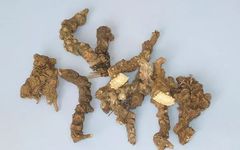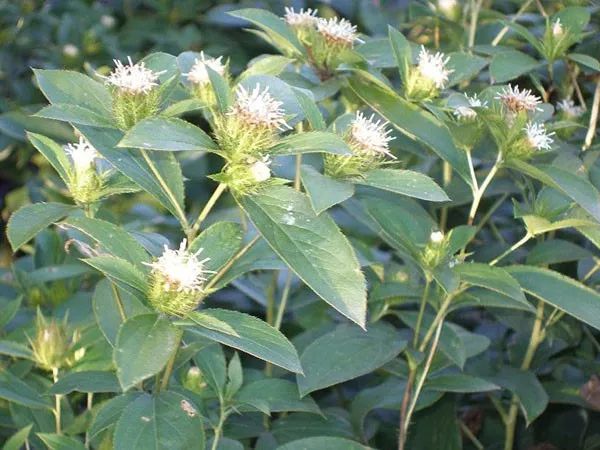
Cang Zhu
Cang Zhu (Atractylodes macrocephala), a traditional Chinese medicinal herb, is the dried rhizome of the Asteraceae family plant. It is harvested in spring and autumn, cleaned of soil, dried, and the fibrous roots are removed. The best quality is produced in Jiangsu, Henan, Hebei, Shanxi, and Shaanxi, particularly from the Maoshan area in Jiangsu. It has the functions of drying dampness, strengthening the spleen, dispelling wind and cold, and improving vision. It is used for dampness obstructing the middle jiao, abdominal distension, diarrhea, edema, beriberi, rheumatic pain, wind-cold common cold, night blindness, and blurred vision.
Cang Zhu Images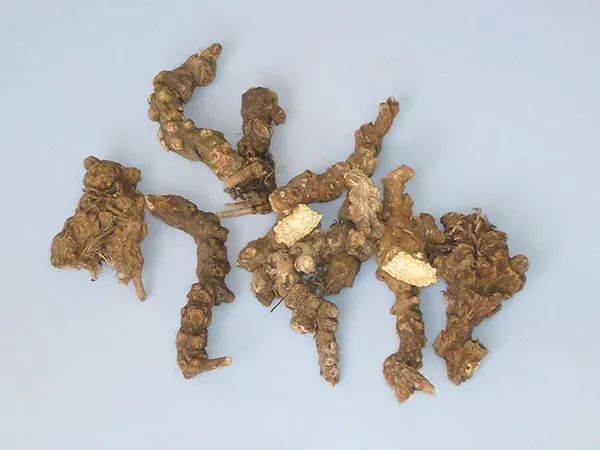 Cang Zhu Images
Cang Zhu Images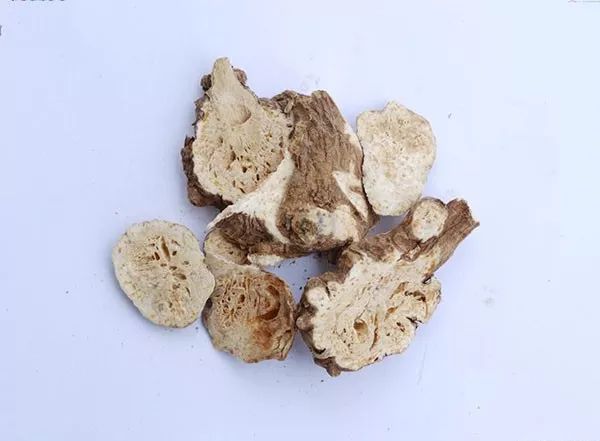 Cang Zhu Medicinal Material Images
Cang Zhu Medicinal Material Images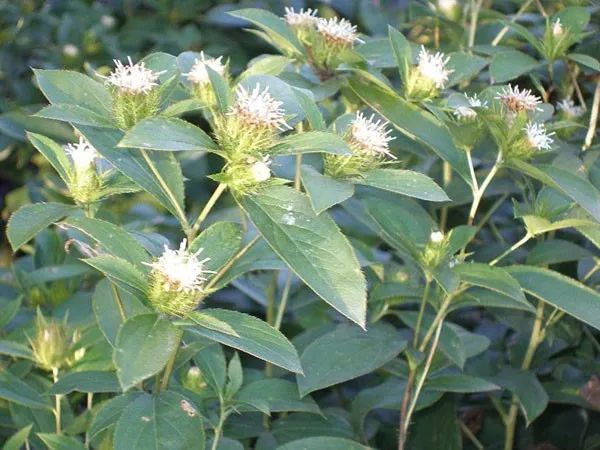 Cang Zhu Plant ImagesCang Zhu IntroductionHerb Name: Cang Zhu Pinyin: Cānɡ Shù Alias: Chi Zhu, Qiang Tou Cai, Ma Ji, Qing Zhu, Xian Zhu, Shan Jing Source: This product is the dried rhizome of the Asteraceae plant Atractylodes macrocephala. It is harvested in spring and autumn, cleaned of soil, dried, and the fibrous roots are removed.Characteristics: This product is irregularly bead-like or nodule-shaped, slightly curved, occasionally branched, 3-10 cm long, and 1-2 cm in diameter. The surface is gray-brown, with wrinkles, transverse grooves, and residual fibrous roots, with the top having stem scars or residual stem bases. It is solid, with a cross-section that is yellow-white or gray-white, scattered with numerous orange-yellow or brown-red oil chambers, and may produce white needle-like crystals upon prolonged exposure. It has a distinctive aroma, with a slightly sweet, spicy, and bitter taste.Chemical Components: The rhizome of Atractylodes macrocephala contains 1.5% volatile oil, with the main components being caryophyllene, atractylon, and eucalyptol.Taste and Properties: Spicy, bitter, warm.Meridians Entered: Spleen, Stomach, Liver.Storage: Store in a cool, dry place.Contraindications: Should not be used by those with yin deficiency and internal heat, or those with qi deficiency and excessive sweating.The Efficacy of Cang Zhu
Cang Zhu Plant ImagesCang Zhu IntroductionHerb Name: Cang Zhu Pinyin: Cānɡ Shù Alias: Chi Zhu, Qiang Tou Cai, Ma Ji, Qing Zhu, Xian Zhu, Shan Jing Source: This product is the dried rhizome of the Asteraceae plant Atractylodes macrocephala. It is harvested in spring and autumn, cleaned of soil, dried, and the fibrous roots are removed.Characteristics: This product is irregularly bead-like or nodule-shaped, slightly curved, occasionally branched, 3-10 cm long, and 1-2 cm in diameter. The surface is gray-brown, with wrinkles, transverse grooves, and residual fibrous roots, with the top having stem scars or residual stem bases. It is solid, with a cross-section that is yellow-white or gray-white, scattered with numerous orange-yellow or brown-red oil chambers, and may produce white needle-like crystals upon prolonged exposure. It has a distinctive aroma, with a slightly sweet, spicy, and bitter taste.Chemical Components: The rhizome of Atractylodes macrocephala contains 1.5% volatile oil, with the main components being caryophyllene, atractylon, and eucalyptol.Taste and Properties: Spicy, bitter, warm.Meridians Entered: Spleen, Stomach, Liver.Storage: Store in a cool, dry place.Contraindications: Should not be used by those with yin deficiency and internal heat, or those with qi deficiency and excessive sweating.The Efficacy of Cang Zhu
Dries dampness and strengthens the spleen; dispels wind-damp; improves vision. It is indicated for dampness obstructing the spleen and stomach; fatigue and lethargy; abdominal distension; poor appetite; nausea and diarrhea; phlegm and fluid retention; dampness and edema; exterior syndrome with dampness; heavy pain in the head and body; rheumatic pain; night blindness.
The Functions of Cang Zhu
1. Anti-hypoxia Effect In a mouse model of hypoxia induced by potassium cyanide, the acetone extract of Cang Zhu at 750 mg/kg significantly increased the survival time of mice and reduced the relative mortality rate. The main active component of Cang Zhu’s anti-hypoxia effect is β-eucalyptol.2. Effects on the Digestive System The volatile oil contained in Cang Zhu has a carminative and stomach-strengthening effect, and its bitterness also promotes appetite. Experiments have shown that Cang Zhu significantly alleviates intestinal spasms induced by the parasympathetic neurotransmitter acetylcholine. In normal rabbits, Cang Zhu reduces the tension of the small intestine’s spontaneous movement. It also relaxes the intestinal muscles in rabbits induced by the sympathetic neurotransmitter epinephrine, and Cang Zhu preparations can restore the amplitude suppressed by epinephrine. Additionally, Cang Zhu can counteract hydrochloric acid-induced acute gastritis and pyloric ligation-induced gastric ulcers in rats through its antagonistic action on cholinergic effects; furthermore, Cang Zhu alcohol has a promoting effect on gastrointestinal motility and a slight contracting effect on gastric smooth muscle.3. Effects on the Cardiovascular System Cang Zhu has a mild inhibitory effect on the frog heart and a slight dilating effect on the blood vessels of the frog’s hind limbs. A small dose of Cang Zhu extract administered intravenously can mildly increase blood pressure in rabbits, while a large dose decreases blood pressure.4. Central Nervous System Inhibition A small amount of Cang Zhu volatile oil has a sedative effect on frogs, while also enhancing spinal reflexes; a larger amount exhibits inhibitory effects, leading to respiratory paralysis and death. The inhibitory components are mainly β-eucalyptol and atractylon. Atractylodes macrocephala and its β-eucalyptol also have an anti-convulsant effect against electric shock-induced spasms in mice.5. Effects on the Liver A water decoction of Cang Zhu at 10 g of raw herb/kg administered to mice for 7 consecutive days significantly promotes liver protein synthesis. The raw herb and its components, atractylon, atractylone, and B-eucalyptol, have significant protective effects against carbon tetrachloride-induced damage in primary cultured mouse liver cells.6. Effects on Blood Sugar Oral or subcutaneous injection of Cang Zhu decoction or alcohol extract at 8 g/kg slightly increases blood sugar in normal rabbits. A decoction at 10 g/kg also produces the same effect; however, in alloxan-induced diabetic rabbits, blood sugar initially rises slightly but then decreases within 10 days of administration, with significant differences observed, and blood sugar does not return to pre-treatment levels after stopping the medication for 7-14 days. Cang Zhu glycosides have a blood sugar-lowering effect in mice, rats, and rabbits, while also reducing muscle glycogen and liver glycogen, inhibiting gluconeogenesis, decreasing oxygen consumption, and increasing blood lactate levels. Its blood sugar-lowering effect may be related to its inhibition of the Pasteur effect in the body. It acts competitively at the same mitochondrial receptor site as adenine nucleotides, thereby inhibiting intracellular oxidative phosphorylation and interfering with energy transfer processes.7. Effects on the Urinary System Rat experiments have shown that the decoction of Atractylodes macrocephala does not have a diuretic effect but significantly increases the excretion of sodium and potassium.8. Antibacterial and Disinfecting Effects Cang Zhu prepared in a covered enamel container with 95% alcohol, submerged for 8-10 hours, and then burned until reduced to ash, resulted in a significant reduction in bacterial counts post-disinfection compared to pre-disinfection, indicating satisfactory disinfection effects.Usage of Cang Zhu Internal use: 3-9 g. — “Chinese Pharmacopoeia” Internal use: decoction, 1.5-3 qian; or prepared as a paste or in pills, powders. — “Dictionary of Chinese Medicine” Internal use: decoction, 3-9 g; or in pills, powders. — “Compendium of Materia Medica”Cang Zhu FormulationsNote: The following formulations should be used under the guidance of a physician.① For treating disharmony of the spleen and stomach, lack of appetite, abdominal distension and pain, bitter taste, nausea, and frequent diarrhea Cang Zhu (remove coarse skin, soak in rice wash for two days) 5 jin, Hou Po (remove coarse skin, processed with ginger juice, stir-fried until fragrant), Chen Pi (remove white) each 3 jin 2 liang, Gan Cao (stir-fried) 30 liang. Grind into a fine powder. Take 2 qian with water in a cup, add 2 slices of fresh ginger and 2 jujubes, decoct until reduced to 7 parts, remove ginger and jujubes, and take warm before meals; adding a pinch of salt and boiling water is also acceptable. (“Jufang” Ping Wei San)② For treating dampness in the Taiyin spleen channel, watery diarrhea, slight heaviness and fullness, weakness, lack of appetite, and frequent diarrhea Cang Zhu 2 liang, Shao Yao 1 liang, Huang Qin 0.5 liang. Grind together, take 1 liang, add half a qian of light-flavored cinnamon, and 1.5 cups of water, decoct until reduced to 1 cup, and take warm. (“Suwen Bingji Baoming Ji” Cang Zhu Shao Yao Decoction)③ For treating summer heat diarrhea, strengthening the spleen and warming the stomach, promoting appetite, and treating dietary injuries, chest fullness and discomfort Shen Qu (stir-fried), Cang Zhu (soaked in rice wash overnight, dried) in equal parts, ground into powder. Form into pills the size of a wutong seed. Take 30 pills at any time, swallowed with rice drink. (“Jufang” Qu Zhu Wan)④ For treating diarrhea Cang Zhu 2 liang, Xiao Jiao 1 liang (remove seeds, stir-fried). Grind into a very fine powder, form into pills the size of a wutong seed. Take 20 or 30 pills with warm water before meals. For those with persistent dysentery, add cinnamon. (“Suwen Bingji Baoming Ji” Jiao Zhu Wan)

